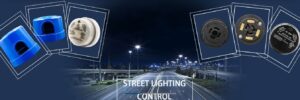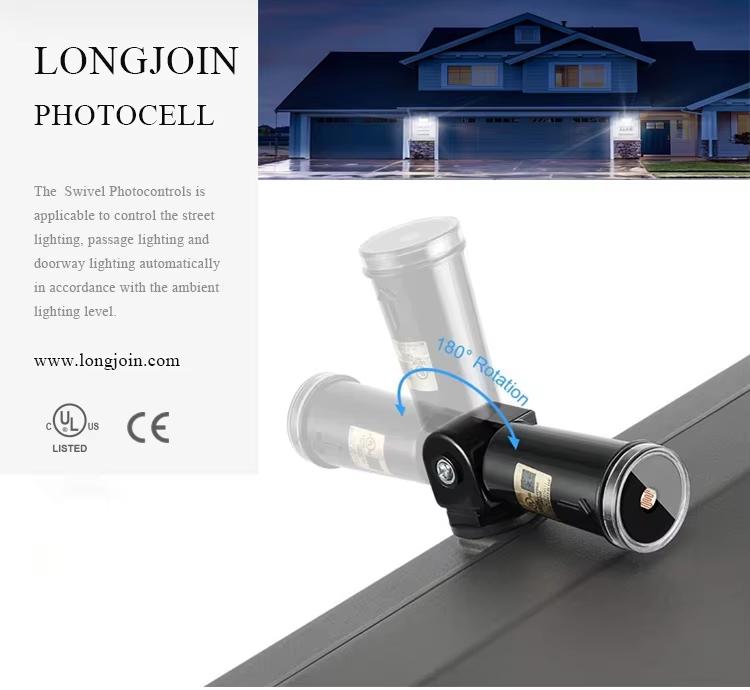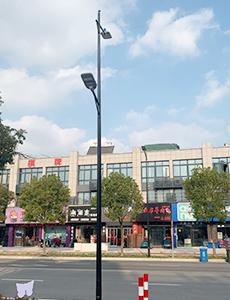- Introduction
- How Have US Tariffs Impacted The Photocontrollers Market?
- What Strategic Adjustments Could Help Long March Photocell Products Against the US Tariff Increase?
- The Bottom Line

High U.S. tariffs on Chinese goods have reshaped how global manufacturers do business. For companies like Long Join, a key photocell manufacturer, USA clients rely on, the challenge is real. These tariffs have raised costs and added pressure to logistics and pricing. But it’s not all bad news.
Despite the disruption, Long March continues to hold a steady market share in road lighting solutions and industrial photocell controls. In fact, the push toward Zhaga Book 18 compliance, smart lighting controls, and energy management systems has opened new doors.
Yes, tariffs present hurdles. But they also force innovation. This is where Long March sees not just a challenge, but an opportunity to transform.
How Have US Tariffs Impacted The Photocontrollers Market?
Negative Impacts
1. Escalating Costs Leading to Supplier Shifts
The U.S. has imposed tariffs up to 145% on Chinese imports. This is significantly increasing costs for a diverse range of products, including photocells. The surge compels customers to seek alternative suppliers to manage expenses.
2. Order Loss and Eroding Customer Confidence
The volatility of tariff implementations has contributed to instability in customer confidence. The clients are reluctant to make big orders because of the risk of unexpected cost increases and disruptions in the supply chain. This can lead to reduced sales and strained business relationships. Below is a table segmenting various industries, their associated risk factor, and consequences.
| Customer Segment | Risk Factor | Consequence |
| OEM Streetlight Integrators | Cost spike | Switching to a local photocell manufacturer |
| Municipal Road Projects | Delivery delays | Missed public project milestones |
| Smart City Developers | Compliance complexity | Refusing non-UL-certified photocell imports |
| Industrial Energy Clients | Tariff fear | Pausing orders amid tariff speculations |
3. Disrupted Delivery Schedules and Complex Logistics
Tariffs have disrupted established supply chains, causing delays in delivery schedules. The need to reroute shipments or find alternative logistics solutions adds complexity and potential delays. The Vietnam case is a glaring example. The said country used to ship Chinese goods through its ports. But now, the warnings have been issued in this regard too. This diminishes customer satisfaction, leading to curtailed operational efficiency.
Positive Impacts
1. Driving Industrial Upgrades and Technological Advancements
The demanding environment prompts Long March to make investments in the latest technologies. With a concentration on smart light controls, LoRa/NB-IoT photocells, and Zhaga Book 18 standard compliance, the company can provide innovative solutions that satisfy changing market needs.
2. Enhancing Customer Loyalty Through Custom Solutions
Offering custom photocell solutions tailored to specific client needs can increase customer stickiness. By providing one-stop services, including non-standard photocell design and photocell surge protection, companies can differentiate themselves and build stronger client relationships.
3. Diversifying Markets and Optimizing Structure
Exploring Mexico OEM assembly allows manufacturers to mitigate tariff impacts and serve the U.S. market more effectively. This strategy not only reduces costs but also opens opportunities in South America and the Middle East, optimizing the company’s market structure. Here is a table listing different regions, their strategic entry points, and possible tariff benefits.
| Region | Strategic Entry Channel | Tariff Benefit |
| USA | Mexico OEM assembly | Avoids 50–60% tariffs |
| Mexico & LATAM | Regional distributor networks | No Section 301 tariffs |
| Middle East | Direct export from Mexico | No added tariffs |
| Europe | CE-compliant smart exports | Low import duties |
4. Strengthening Brand Influence and Identity
By emphasizing UL-certified photocells and robust energy management systems, brands can position themselves as a reliable and innovative. This focus enhances brand identity and builds trust with clients seeking high-quality, compliant products.
What Strategic Adjustments Could Help Long March Photocell Products Against the US Tariff Increase?

Product Development Strategy
Embracing Intelligence and Modular Design
Long March is advancing its product line by integrating intelligent features and modular designs. This approach allows for flexible configurations, catering to diverse urban lighting needs. By aligning with Zhaga Book 18 compliance and ANSI, the company ensures interoperability and future-proofing of its smart lighting controls.
High-End Differentiation and Compliance
Long March is enhancing its photocell technical parameters to meet stringent standards. Below is a detailed list of different international certification that the company have, reinforcing its position as a leading photocell manufacturer in the USA.
| Certification | Purpose / Importance |
| UL (Underwriters Laboratories) | Ensures product safety and market access in North America |
| FCC (Federal Communications Commission) | Verifies electromagnetic compatibility for wireless communication |
| DLC (DesignLights Consortium) | Qualifies for energy efficiency rebates and incentives |
| RoHS (Restriction of Hazardous Substances) | Limits the use of hazardous materials in electrical/electronic products |
| ISO 9001:2015 | Ensures quality management and continuous product/process improvement |
Market Expansion Directions
Strengthening Presence in the USA
To mitigate tariff impacts, Long March can explore Mexico as an OEM assembly location. This will help, leveraging favorable trade agreements to maintain competitiveness in the U.S. market.
Targeting South America and the Middle East
Recognizing growth opportunities, the firm is venturing into South America and the Middle East. Smart retail in the Middle East is expected to reach USD 12.66 billion by 2030, signaling a strong demand for smart lighting solutions.
Increasing Smart Product Share in Europe
In Europe, there is a strategic drive to raise the share of smart products, in line with the region’s focus on energy efficiency and sustainable urban development.
Marketing and Sales Adjustments
Developing Anti-Tariff Solution Packages
Long March can formulate anti-tariff solution packages. This will allow for bundled services and flexible pricing to offset increased costs for clients.
Enhancing Digital Marketing Efforts
The company can strengthen its digital marketing. Utilizing content marketing and social proof can communicate value and build customer trust amidst pricing challenges.
Launching Industry Application Solutions
Tailored industry application solution packages can be introduced. This addresses specific sector needs and demonstrates the versatility of Long March’s photocell products.

Customer Service Upgrades
Dedicated Support for Key Customers
Assigning dedicated personnel to key customers ensures personalized service and responsiveness. This fosters stronger relationships.
Flexible Delivery and Service Guarantees
Implementing flexible delivery cycles and offering price plus service guarantees provides clients with reliability and assurance, crucial in uncertain economic climates.
Medium and Long-Term Response Plans
Exploring Third-Country Production
To further mitigate tariff risks, Long March is exploring production and transshipment options in third countries, enhancing supply chain resilience. The table below highlights some strategic advantages of third-country production.
| Category | Specific Advantage |
| Market Access | Enhanced Entry to North and Latin American Markets |
| Cost Efficiency | Reduction in Operational and Labor Costs |
| Supply Chain Resilience | Diversification of Manufacturing Locations |
| Intellectual Property Protection | Stronger IP Safeguards |
| Proximity to Key Markets | Faster Delivery Times to the U.S. Market |
Pursuing USA Certifications
Applying for USA general certifications and qualifications reinforces the company’s commitment to compliance and facilitates smoother market operations.
Positioning as an Intelligent Photocell Solution Provider
Long March aims to build its image as a comprehensive intelligent photocell solution provider, integrating advanced technologies and services to meet evolving market demands.
The Bottom Line
High tariffs have reshaped the competitive landscape for Chinese-made photocells in the U.S. With smart adjustments like OEM assembly in Mexico and product innovation, Long March continues to adapt and grow. For reliable sourcing of UL-certified, Zhaga-compliant, and custom photocell solutions, Chi-Swear remains a trusted partner committed to quality and compliance.
External Links
- https://finance.yahoo.com/news/live/trump-tariffs-live-updates-bessent-says-theres-no-unilateral-offer-to-slash-tariffs-on-china-191201348.html
- https://edition.cnn.com/2025/04/18/business/yiwu-china-market-impact-trump-tariffs-intl-hnk-dst/index.html
- https://en.wikipedia.org/wiki/LoRa
- https://en.wikipedia.org/wiki/Narrowband_IoT
- https://www.zhagastandard.org/?view=article&id=64:book-18&catid=10
- https://www.ansi.org/
- https://www.grandviewresearch.com/horizon/outlook/smart-retail-market/mea
- https://www.sentricmarketingsolutions.com/post/price-increase-due-to-tariffs-marketing-strategies-for-business-owners






